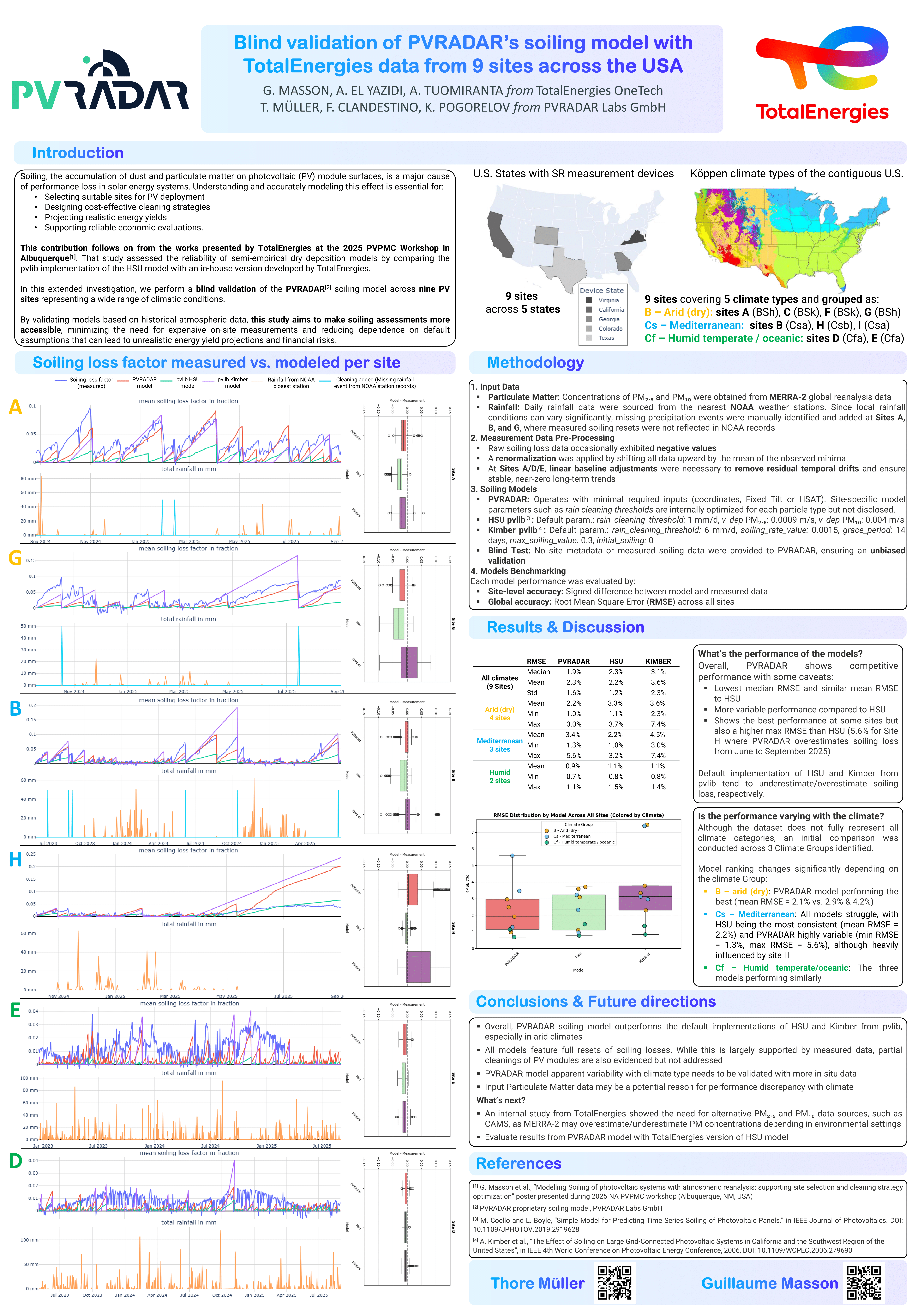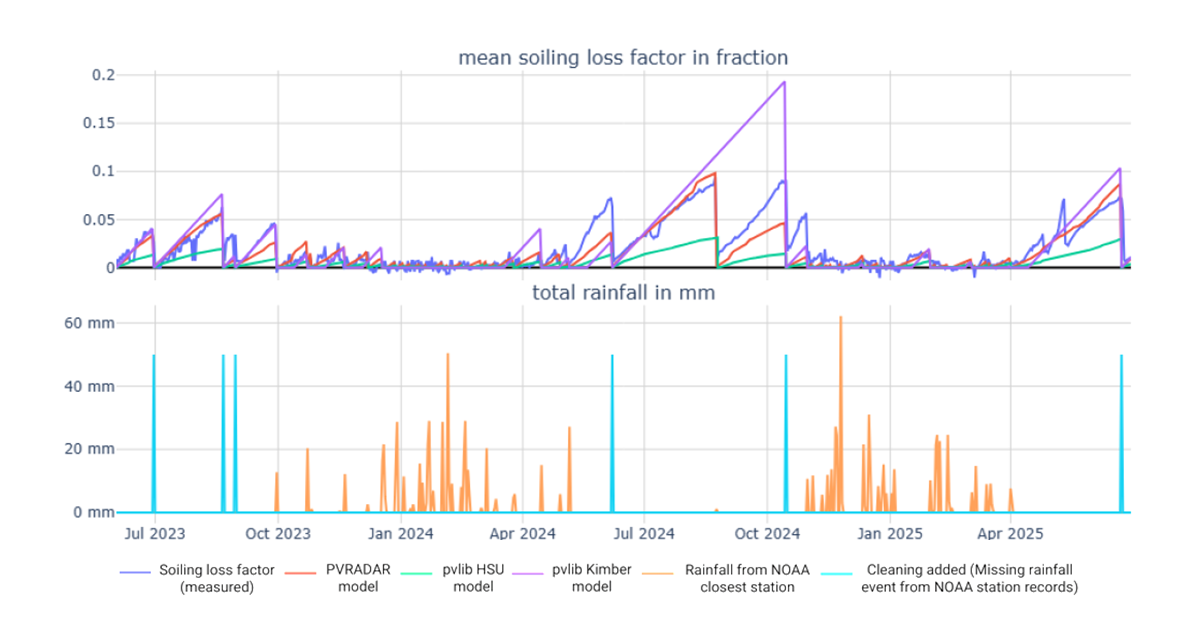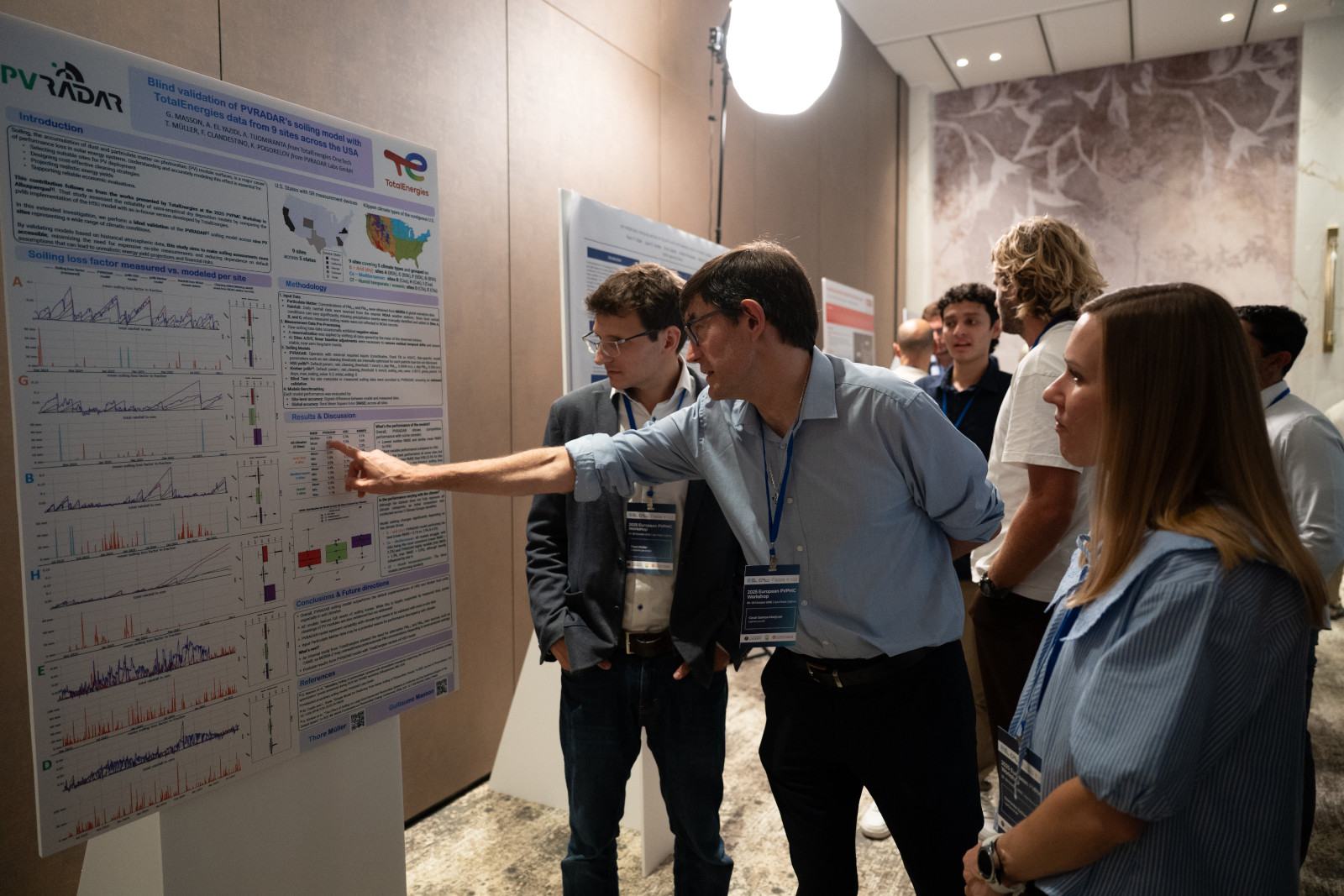Blind validation of PVRADAR’s soiling model with TotalEnergies data from 9 sites across the USA
Accurately estimating soiling losses is critical for the successful development and operation of photovoltaic (PV) projects. Reliable soiling models enable developers to select the best site for future projects, optimize cleaning strategies, and refine energy yield and financial evaluations.
With this goal in mind, TotalEnergies conducted a blind validation study to assess the performance of the PVRADAR soiling model against two industry references: the HSU and Kimber models implemented in pvlib. The evaluation covered 9 PV sites across the United States, each representing distinct climatic and environmental conditions.
At each site, TotalEnergies provided measured soiling data solely for validation, revealing only the project location and mounting configuration. This setup ensured a true blind test and an unbiased assessment of the models’ accuracy.
The HSU and Kimber models are executed with their default pvlib parameters. All environmental inputs are automatically retrieved through the PVRADAR Python SDK, including meteorological data, PM₂.₅ and PM₁₀ concentrations from MERRA-2, and rainfall data from the nearest NOAA weather stations.
 Poster "Blind validation of PVRADAR’s soiling model with TotalEnergies data from 9 sites across the USA", presented at the 2025 European PV Performance Modeling Collaborative (PVPMC) Workshop in Cyprus.
Poster "Blind validation of PVRADAR’s soiling model with TotalEnergies data from 9 sites across the USA", presented at the 2025 European PV Performance Modeling Collaborative (PVPMC) Workshop in Cyprus.
Results confirm PVRADAR’s higher accuracy
According to the authors: "PVRADAR soiling model outperforms the default implementations of HSU and Kimber from pvlib, especially in arid climates".
Model performance was evaluated by comparing the soiling profiles predicted by each model with the measured data from the sites. The Root Mean Square Error (RMSE) was used as the main measure of accuracy.
Overall, the PVRADAR soiling model showed the best performance, with a median RMSE of 1.9%, compared to 2.3% for the HSU model and 3.1% for the Kimber model.
 Comparison of soiling estimates from the PVRADAR model (red), pvlib HSU (green), and pvlib Kimber (purple) against measured soiling data (blue) for one of the sites. Rainfall (orange) and cleaning events (light blue) are also considered to provide an accurate representation of the site conditions.
Comparison of soiling estimates from the PVRADAR model (red), pvlib HSU (green), and pvlib Kimber (purple) against measured soiling data (blue) for one of the sites. Rainfall (orange) and cleaning events (light blue) are also considered to provide an accurate representation of the site conditions.
 Root Mean Square Error (RMSE) boxplot for the three evaluated models. PVRADAR shows the lowest overall error, followed by pvlib HSU, while pvlib Kimber exhibits a considerably higher RMSE.
Root Mean Square Error (RMSE) boxplot for the three evaluated models. PVRADAR shows the lowest overall error, followed by pvlib HSU, while pvlib Kimber exhibits a considerably higher RMSE.
PVRADAR demonstrates reliability in all climates
The analysis also provides insights into the influence of climatic conditions:
- PVRADAR performs best in arid climates, where soiling accumulation is driven primarily by particulate deposition and rainfall events are scarce.
- In Mediterranean climates, the results of PVRADAR and HSU are comparable, both outperforming the Kimber model.
- In humid temperate regions, all three models yield similar accuracy, as the frequent rain events limit soiling buildup and reduce model differentiation.
Recognition at the 2025 PVPMC Workshop
 Thore Müller presenting the study at the 2025 European PV Performance Modeling Collaborative (PVPMC) Workshop in Cyprus.
Thore Müller presenting the study at the 2025 European PV Performance Modeling Collaborative (PVPMC) Workshop in Cyprus.
The results of this study were presented at the 2025 European PV Performance Modeling Collaborative (PVPMC) Workshop in Cyprus by Guillaume Masson (TotalEnergies OneTech) and Thore Müller (PVRADAR). The work was recognized as one of the best poster presentations of the conference, underscoring the relevance and quality of the collaborative research between TotalEnergies and PVRADAR.
Interested? Contact us.
Learn how PVRADAR’s soiling loss assessment helps you reduce uncertainty
improve yield estimates, and make better investment decisions across your portfolio.
